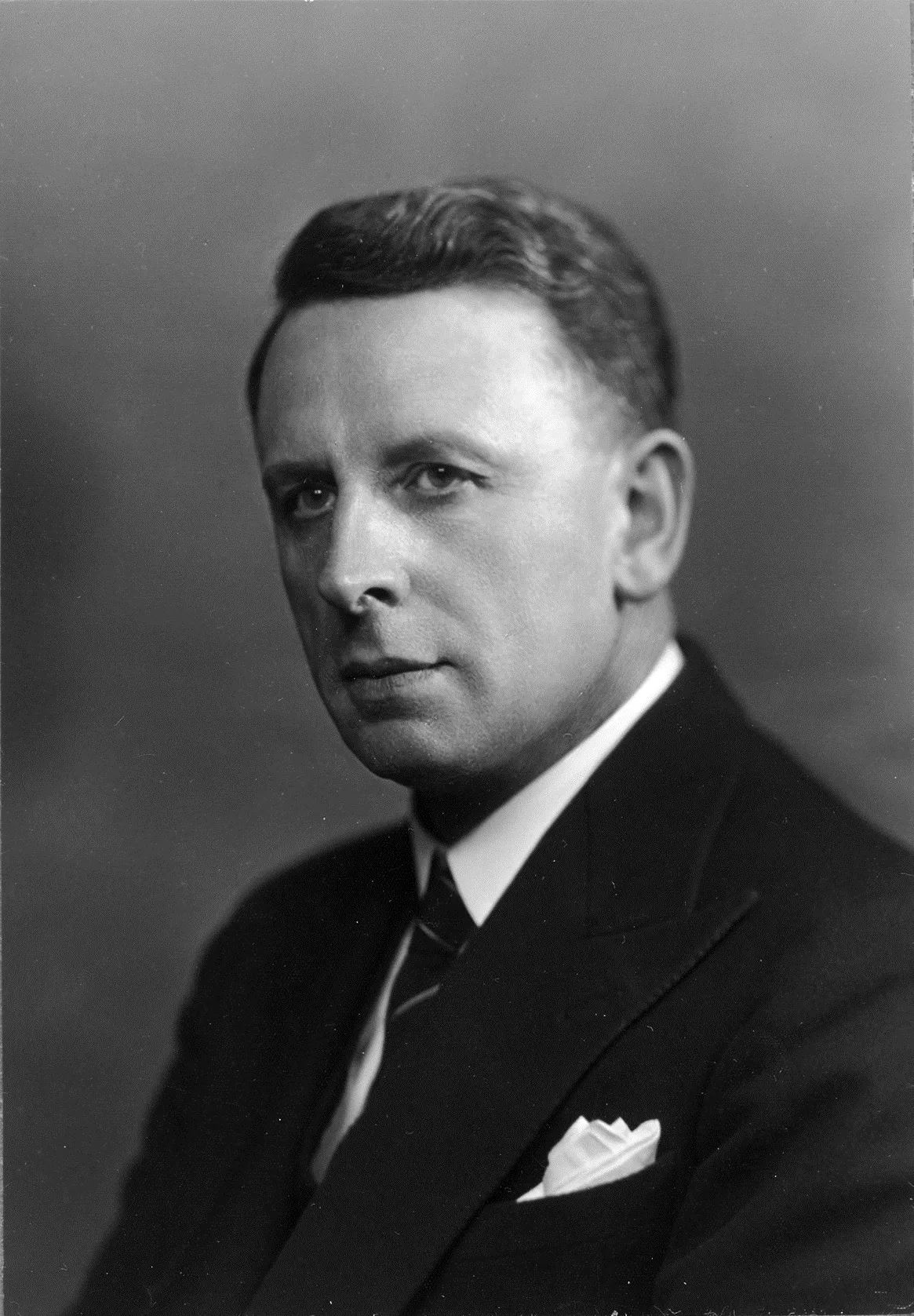Sir Arthur Fleming was born at Newport, Isle of Wight, January 1881 and was educated at Portland House Academy, Newport and at Finsbury Technical College. After working as an improver with the London Electric Supply Corporation and as a test-room assistant with Elliot Brothers, Lewisham, he was selected by British Westinghouse, later Metropolitan- Vickers Manchester, to undergo a course of training with Westinghouse Electric and Manufacturing Co at its East Pittsburgh works.
On joining the Manchester company in 1902 he was engaged as an insulation specialist, soon becoming chief Transformer Designer and then in 1913, Superintendent and Chief Engineer of the Transformer Department.

Portrait of Sir Arthur P Fleming
Fleming believed that the most important raw material of industry was its young people and he took steps to see that his own young people form the embryo craftsman to the university graduate were suitably trained. Soon after his appointment, he introduced arrangements for the further education and systematic training of schoolboy recruits in the transformer department.
By 1908 he had extended these arrangements throughout the company; in 1914 he established a trade apprentice school and in October 1917 he became Manager of the company's education department. In the sphere of industrial training, the names of Fleming and Metropolitan-Vickers became known internationally and recruits came not only from Britain but from all over the world. His influence permeated the electrical industry as a whole, to its great benefit.
His far-sighted views on engineering education and training were matched by his realisation of the need for fundamental research within industry, especially for research which was not limited to the problems of existing products. His plans were delayed by the First World War when he and a few colleagues made important contributions to submarine detection, for which he was created CBE in 1920.
In that year the first buildings for his research department were completed and it was typical of his foresight that he arranged for these buildings to be used as the site for the transmitter and studios of the BBC's first Manchester station, 2ZY, which began to broadcast within a day of the opening of 2LO in London. By 1929 the department contained one of the largest high voltage laboratories in the world.
The department attracted a succession of men of outstanding ability, who responded to Fleming's inspiration by making many notable contributions to pure and applied science. Particularly important was the development of demountable high power thermionic valves which helped make possible the installation of the first radar stations just before the outbreak of war in 1939. In 1931 Fleming became the company's director of research and education, a post which he held until his retirement in 1954.
Fleming's interest and activities extended well beyond the electrical engineering industry. He held for some time a position with Associated Electrical Industries similar to that he had held with Metropolitan-Vickers.
He was a member of the Council of the University of Manchester; of the Governing Body of Imperial College; of the Ministry of Education Committee on the training of teachers and youth leaders; and of the War Cabinet Engineering Advisory Committee; Chairman of the Athlone Fellowship Committee of the Board of Trade and of the Federation of British Industries Overseas Scholarships Committee; and President of Sections G and L of the British Association.
He played an important part in the establishment of the Department of Scientific and Industrial Research and of the Electrical Research Association.
After the Second World War, as Chairman of the Federation of British Industries Overseas Scholarship Committee, he led an engineering mission to Latin America and returned much impressed with the potentialities of the young republics. He also went to Canada as head of the UK Mission to Canada for the Education and Training of Engineers in 1950. Later he was made President of the British Association of Commercial and Industrial Education.
Among his interests, the Institution of Electrical Engineers was of special importance. He joined the Institution in 1898 and was elected an Associate Member in 1905 and a Member in 1911. In 1932 he was elected to Council and his active service in many Institution offices culminated in his election as President in 1938, although he continued to make an active contribution to the Institution's affairs until the 1950s. He delivered the Faraday Lecture in 1937-38.
Throughout his career, Fleming lectured frequently, both at home and abroad about industrial research and training and wrote many papers, the value of which lay in the widespread practices they did so much to stimulate.
He was joint author of several monographs, 'The Insulation and Design of Electrical Windings' (with R Johnson, 1913); 'Engineering as a Profession' (with R S Bailey, 1913); 'The Principles of Apprentice Training (with J G Pearce, 1916);
'An Introduction to the Principles of Industrial Administration' (with H J Brocklehurst, 1922); 'Research in Industry' (with J G Pearce, 1922); and 'A History of Engineering' (with H J Brocklehurst, 1925).
He was awarded the Hawksley Medal by the Institution of Mechanical Engineers in 1937, the Institution's Faraday Medal in 1941 and an Honorary Fellowship in 1952.
The Universities of Manchester and Liverpool conferred honorary doctorates upon him and he was knighted in 1945 for his services to education.
In 1904 he married Rose Mary Ash of Newport, Isle of Wight; they had two sons and one daughter. Sir Arthur died at his home at Bonchurch, Isle of Wight on 14 September 1960.